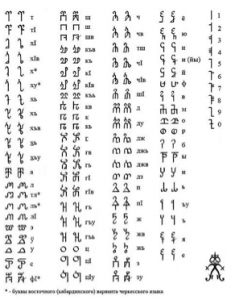The English language is a mystery to many non-speakers. This is largely due to the contradictions within the language itself, such as English words that have opposite definitions despite being spelled the same way. If you’re an English speaker, you do not pay much attention to these things. But for English language learners, these types of words add to their confusion with the language.
Do you know what the words that are spelled similarly and have two different meanings are called? They are called contronyms. The simplest explanation is that they are words that have opposite meanings.
Several nyms comprise the English language. Words that mean the same thing are synonyms. Words that sound the same but have different spelling, such as pear and pair are homonyms. Antonyms are the opposite meaning of a word. Heteronyms are words spelled similarly but pronounced differently.
What is a contronym?
A contronym is one word that has opposite meanings, which depends on the context of its use. It seems illogical that one word can have two different meanings, which can be the exact opposite of the other at times. For example, the word cleave means to cling, to adhere or to stick to something or someone. But it can also mean to cut, to split or to separate.
A contronym has other names, too. Some people call it contronym while others refer to it as autoantonym. More descriptive terms include antilogy, self-antonym, enantiodrome and antagonym. There’s still another term that many people use to refer to contronyms – Janus words. It was derived from Janus, an Italian deity of old, said to be heaven’s doorkeeper whose head has two faces, one in front and one at the back.
Development of English words with opposite meanings
The English language continues to evolve, including its parts. People, especially native speakers of English use contronyms in their daily conversation, but it may be tricky for learners of the language.
Contronyms develop over time as a result of constant use. For example, according to its etymology, the word blunt used to mean obtuse (person) or dull (weapons, tools) when it was used from the 12th century to the late 14th century. But around the 1580s, it became a word to mean sharp, referring to abrupt manner or speech, which takes on the context of making an unceremoniously made or direct comment. Another example is the word bolt, an Old English term whose original meaning (as a verb) is to fix or fasten something. Centuries later, bolt is also used to mean spring into sudden action, which could have been derived from bolt (noun) that refers to a missile or projectile such as an arrow.
One vital thing for English language learners to remember is to understand the context in using a word so that they will not make the mistake of saying something that is contradictory to the intended meaning.
This knowledge is essential in interpretation and translation as well. If a contronym is used in a different context, it can distort the whole meaning of the conversation or a sentence. If you need translation or interpreting services, ensure that you collaborate with a professional and native-speaking translator or interpreter, so as to avoid these types of mistakes.
The development of contronyms is also due to pronunciation changes through the years. Let’s look at the word cleave again. It means to join together and to split apart. It came from two Old English words, cleofan (split apart, separate) and cleofian (also clifian, cliofian) (adhere, stick together). Through years of use, the two words started to sound the same and later merged to become cleave.
Here’s another interesting one. Let is a word that used to mean stop, delay, obstruct, impede. It came from the Old English term lettan. Another Old English word, lætan means to leave undone, leave behind, bequeath or to allow. The original words later formed the contronym, let.
In some cases, the difference is the variant of English one uses creates the contronyms. In a parliamentary procedure, to table a bill means that the bill could be discussed, considered or reconsidered in British English. In American English however, it means to suspend or postpone the consideration.
Examples of contronyms
If you love languages, you’ll have fun with contronyms. But for many people, it can be confusing. So instead of getting confused, here are some examples of contronyms, which could be words that you use every day or see often. You may not even realize that you are using them in two different contexts because you are so used to them.
- Sanction is either to impose a penalty on something or give official approval or permission.
- You use left when you mean someone or something is still remaining (this is what’s left of the bunch), but it can also be used to mean someone departed (left the party, group, team, etc.).
- You dust the furniture to remove dirt. You can also dust, in the context of applying it, such as dusting a cake with powdered sugar.
- When you seed a cucumber, you are removing its seeds. When you seed your lawn, you are adding seeds (grass) to the soil.
- Trim can mean to cut or remove irregularities or outgrowth (plants, trees) or reduce the length of your hair. But you can also use the word to mean embellishing or decorating something, such as a Christmas tree.
- When you mean something or someone is moving rapidly, you say it or she/he is fast. In terms of fabric color, it means that the dye will not run. It can also mean something is unmoving or fixed.
- Off, when used as an adjective can mean something is not in operation or is deactivated, such as the stove is off or the light is off. It can also mean activated (the alarm went off) as well. As an adverb, it can denote distance in relation to space and time (the dinghy is two kilometers off the shore) or moving from a position or place (drove off, went off to work, event is still two weeks off).
- Weather is an atmospheric condition, but it could mean enduring, as in weathered the economic downturn, or worn away, just like weathered wood or rock.
- You can either screen to hide or block out an ugly view or corner, or use it to mean show (film/movie), test or sort.
- Clip can mean bind things together, such as sheets of paper. It can also mean to separate or cut away or a part, as in clip your fingernails, clip the wings.
- Centuries back, flog meant to whip, cane or beat a person or animal. In today’s application, it is used as a sales term, as in persistently promote something (such as a book).
- The word hold can either mean to support something or someone, but it can also mean hinder, arrest or confine.
- When you say toss, it can either mean discarding something, but it can also mean suggesting (like toss out an idea).
- The military term anabasis means military retreat as well as military advance.
Here are more contronyms for you to use:
- Aught (nothing, all)
- Chuffed (annoyed, pleased)
- Consult (give advice, seek advice)
- Custom (special, usual)
- Dollop (small amount, large amount)
- Enjoin (prohibit, prescribe)
- Garnish (curtail wages, enhance food)
- Give out (stop production, produce)
- Grade (level, incline)
- Handicap (disadvantage e.g. physical or mental condition, advantage)
- Mean (excellent, average)
- Put out (generate, extinguish)
- Strike (miss, hit)
- Transparent (obvious, invisible)
- Unbending (relaxing, rigid)
- Wind up (start up, end)
- Story (factual, untrue account)
- Scan (skim, scrutinize)
- Refrain (stop an action, repeat an action, e.g, song refrain)
- Oversight (close control and scrutiny, accidental error or omission)
- Overlook (place to see things from above, miss seeing things or details)
- Peruse (read in a cursory or casual way, go over something attentively)
Remember that when using contronyms, you have to be aware of the words’ context, to ensure that you are relaying the right message.
Assurance of right context and correct definitions
The job of a professional translator is to provide an accurate translation of a source document into any language, which also includes careful consideration of the context of the message to ensure its proper delivery. At Day Translations, Inc. we work only with native speakers, to ensure the quality of the language. Our translators live in-country, so they are not only fluent in the language, but they are also fully knowledgeable of the culture of their country. They are professionals with years of experience in language services.
We also have subject matter experts for specific translation needs. We see to it that all the translation projects we handle pass through our quality control process to make sure that ensure accuracy, appropriateness of terminology and proper context. For all your translation and interpreting needs, call Day Translations. We offer a full suite of language services so you only have to talk to one organization. We are available 24/7, 365 days of the year. You can reach us through 1-800-969-6853. You have the option to send us an email as well here: Contact us.












Sorry, the comment form is closed at this time.